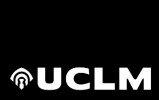Evolutionary dynamics (I)

10:40 – 11:00 – SARS-CoV-2 Evolution on a Dynamic Immune Landscape / Presenting author: Max Von Kleist.
11:00 – 11:20 – Eco-evolutionary models for trait evolution and minimum viable population sizes in a changing environment / Presenting author: Peter Nabutanyi.
11:20 – 11:40 – Understanding the biased distribution in traction forces in cooperative cell motility / Presenting author: Ying Zhang.
11:40 – 12:00 – Coalescents with migration in the moderate regime / Presenting author: Sophia-Marie Mellis.
Virus Growth / Vaccine strategies (I)

10:40 – 11:00 – Dynamical analysis of an HIV infection model including quiescent cells and immune response / Presenting author: Ibrahim Nali.
11:00 – 11:20 – Estimation of the cell-to-cell transmition rate using a spatio-temporal mathematical model / Presenting author: Yusuke Asai.
11:20 – 11:40 – On the exact and population bi-dimensional reproduction numbers in a stochastic SVIR model with imperfect vaccine / Presenting author: María Gamboa Pérez.
11:40 – 12:00 – Designing vaccination strategies for epidemics models using multiple optimal controls / Presenting author: Fernando Saldaña.
Biofilms (II)

10:40 – 11:00 – Managing biofilm infection through controlled drug release from a polymer-free implant / Presenting author: Parna Mandal.
11:00 – 11:20 – Modelling bacterial chemotaxis in biofilms / Presenting author: Fabiana Russo.
11:20 – 11:40 – Modelling of ecology interactions in a phototrophic-heterotrophic biofilm reactor system / Presenting author: Luigi Frunzo.
11:40 – 12:00 – Sulfur mediated precipitation in a biofilm reactor / Presenting author: Vincenzo Luongo.
Vector-borne diseases: dengue

10:40 – 11:00 – Exploring dynamics and stability in a dengue fever transmission model with delay terms / Presenting author: Burcu Gürbüz.
11:00 – 11:20 -Two-vector transmission dynamics of the dengue virus / Presenting author: Donna Dyer.
11:20 – 11:40 – A household model for the introduction of Wolbachia to control dengue / Presenting author: Abigail Barlow.
11:40 – 12:00 – Efficacy of the Sterile Insect Technique in presence of inaccesible areas: a study using twxo-pach models / Presenting author: Nga Nguyen.
Extracellular Matrix (I)

10:40 – 11:00 – Modelling and simulation of intracellular signaling pathways: coupling chemical processes and mechanical properties / Presenting author: Sofie Verhees.
11:00 – 11:20 -Mathematical modelling of wild type and mutant / Presenting author: Marcos Gouveia.
11:20 – 11:40 – Modelling the regulation of chronic wounds by tissue inhibitors of matrix metalloproteinases / Presenting author: Sonia Dari.
11:40 – 12:00 – Microenvironment anisotropy drives cell migration and large-scale nuclear deformations – a coupled in silico and in vitro study / Presenting author: Ana Bensabat.
Metabolic networks (II)

10:40 – 11:00 – Feedback-forward control in signalling pathways / Presenting author: Artur Wycislok.
11:00 – 11:20 – Hypoxia-inducible factors (HIFs) and oxygen homeostasis: the making of a (misleading) biological theory / Presenting author: Clemente Fernández Arias.
11:20 – 11:40 – Growth, energy or both? Determinants of optimal metabolic pathway choice by microorganisms / Presenting author: Maarten Droste
11:40 – 12:00 – Prevalence of balancing complexes in large-scale biochemical networks / Presenting author: Anika Küken
Non-pharmaceutical interventions in epidemics

10:40 – 11:00 – Can age-based restrictions replace horizontal lockdowns? / Presenting author: Vasilis Tsilidis.
11:00 – 11:20 – Incorporating compliance to non-pharmaceutical interventions in epidemiological models / Presenting author: Ka Yin Leung.
11:20 – 11:40 – Optimal management of an emerging pathogen using precautionary management strategy / Presenting author: Jacinta Onwuka.
11:40 – 12:00 – Quantifying the effect of non-pharmaceuticalinterventions in a compartmental epidemiological model / Presenting author: Marvin Schulte.
Topological data analysis for applications in biomedicine

Organizers: Salvador Chulián García & Bernadette Jana Stolz-Pretzer.
10:40 – 11:00 – Modelling periodic biological processes as persistent cohomology classes / Presenting author: Kelly Maggs.
11:00 – 11:20 – Capturing spatial patterns with topological methods / Presenting author: Ondrej Draganov.
11:20 – 11:40 – Specific TDA pipelines for understanding spatial biology of multiplex data / Presenting author: A. Natarajan, M. J. Jiménez.
11:40 – 12:00 – Relational persistent homology for multispecies data with application to the tumor microenvironment / Presenting author: Jagdeep Dhesi.
Mathematical models for pest dynamics and control

Organizers: Sara Pasquali & Bedr’Eddine Ainseba
10:40 – 11:00 – Controlling burrowing nematodes in banana roots based on an epidemiological model with variable infestation density / Presenting author: Suzanne Touzeau.
11:00 – 11:20 – Physiological-based models and field measurements: a good binomial to improve models’ predictivity / Presenting author: Luca Rossini.
11:20 – 11:40 – Mathematical modelling of pest resistance to insecticides and global dynamics / Presenting author: Khadidja Aicha Kada.
11:40 – 12:00 – Climate-sensitive dynamically-structured population modelling for the castor bean tick, lxodes ricinus / Presenting author: Iman Mehrabinezhad.
Recent developments in biofilm modelling

Organizers: Maria Rosaria Mattei & Luigi Frunzo
10:40 – 11:00 – Immersed boundary models for biofilm spread and response to antibiotics / Presenting author: Ana Carpio.
11:00 – 11:20 – Estimating biofilm viscoelastic properties using a Bayesian framework / Presenting author: Nick Cogan.
11:20 – 11:40 – Biofilm accumulation and mass transport in porous media modeled by a PDE-ODE coupled system derived from a WannerGujer like compartment model of biofilm reactors / Presenting author: Hermann Eberl.
11:40 – 12:00 – Multiscale modeling of microbial community metabolism / Presenting author: Isaac Klapper.



